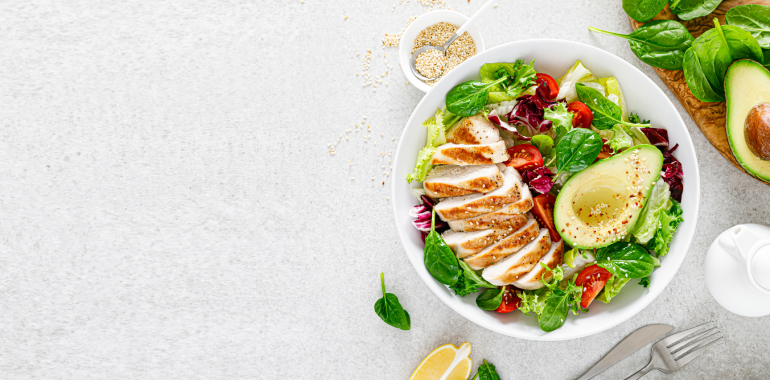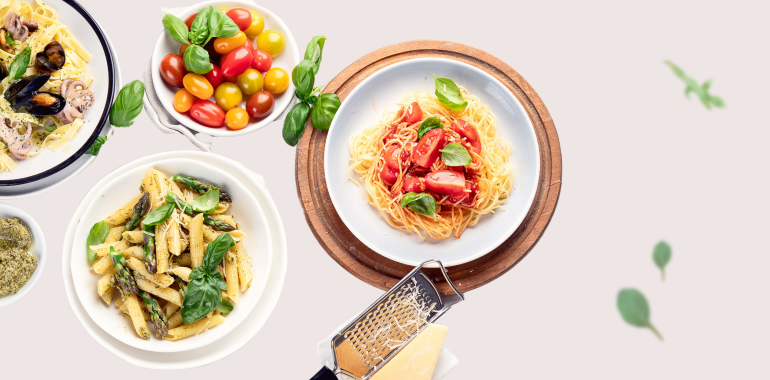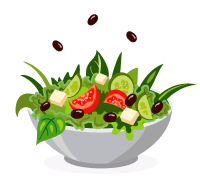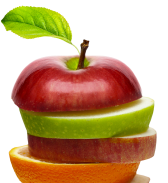Table Of Contents
What Is a 4000 Calorie Diet and How Does It Work?
You may need to stick to a 4,000-calorie meal plan to get the nutrients your body requires if you’re a male athlete who is serious about increasing your performance in sports like basketball, football, track, long-distance running, swimming, tennis, or baseball.
However, consuming 4,000 calories a day is insufficient; the majority of your calories should come from meals that are high in lean protein, whole grains, fruits, and vegetables and low in fat, sugar, and sodium.
The average woman is thought to need between 1600 and 2000 calories per day to maintain her weight, but the average guy is believed to need between 2000 and 3000 calories per day. A variety of variables, including age, gender, height, level of physical activity, and more, influence a person’s energy intake.
The minimal number of calories needed to maintain health is 1200 for women and 1500 for men. Therefore anyone trying to lose weight would need to cut their daily calorie consumption by 500 to 1000. On the other hand, those who want to gain weight gradually and consistently must increase their daily energy intake by 300 to 500 calories, and for rapid weight gain, by 700 to 1000 more calories.
With this in mind, a 4000 calorie bulking meal plan daily would be excessive for the average person.
- It can be challenging to consume 4,000 calories in one sitting, and you might ask if this entitles you to a daily diet of junk food if you’re bulking or training for a particular activity.
- Continue to eat nutritious foods in the correct proportions to fuel your workouts effectively and support the growth of as much lean muscle as you can, all while feeling energized and not overly full.
Ask a medical professional or nutritionist with expertise in sports medicine to assist you in creating a personalized plan.
Amount of Meals
On a 4,000-calorie diet, the traditional three meals per day might be less effective because you need about 1,333 calories in every meal to meet your objectives.
If you divide your daily calorie intake into five meals, each one will be 800 calories less overwhelming. Your serving sizes get even lower when you eat roughly every two hours, resulting in eight meals daily.
The number of meals you consume each day ultimately depends on your schedule and personal preferences. For instance, it is more difficult to find time to eat eight meals on a rigid schedule than it is to find time for five larger meals.

Why Can a Meal Plan For 4000 Calories a Day Be the Key to Your Weight Loss?
A meal plan for 4,000 calories a day can be a great way to reach your weight loss goals. By including healthy, balanced meals and snacks, you can not only ensure that you get the nutrients needed for optimal health but also control portion sizes to hit your calorie needs for the day.
Eating four bigger meals throughout the day instead of several smaller ones can also help regulate hunger and keep you feeling full longer.
Planning meals ahead of time allows you to keep an eye on how much food you’re consuming during each meal, making it easier to stick with your goals without having to scrounge together unhealthy snacks or binge on sweets when hunger strikes.
At the end of the day, an organized and proportioned meal plan can lead to increased success in achieving your desired results.
The most likely explanation for why you are not gaining weight when eating high calories lunch is because you are burning more calories than you are taking in. A quick metabolism or leading an active lifestyle may be to blame for this. You may not see a change in the number on the scale if you gain muscle while shedding fat.
There are five reasons why you could not be gaining weight even though you consume 4000 calories:
- You have an extremely high basal metabolic rate.
One of the first things you should take into account if you have trouble gaining weight while eating a lot of calories is that your basal metabolic rate may already be very high.
For instance, a 6’2″ and 285-pound active 30-year-old football player will have a BMR of 2322 calories and a TDEE of roughly 4413 calories. We can see from this example that some people require more than 4000 calories to acquire weight.
Similarly to that, you can use this calculator to determine how many calories you burn overall each day.
- You are not accurately tracking your calories.
Suppose none of those abovementioned circumstances apply to you, and you still need to understand why you are not gaining weight on 4000 calories daily. In that case, you must take into account the potential that you may not be accurately measuring your calories and may thus be consuming less than you believe.
Your calorie count can only be accurate if you consistently track your calories in trusted food apps, weigh and measure your meals, and use other methods to ensure accuracy.
- You are burning a lot of calories through exercise.
While the majority of people exclusively associate intense physical activity with sports and workouts, this is by no means the case. For example, compared to someone who works a sedentary profession, like sitting at a desk, someone who is a firefighter will burn a lot more calories each day.
When you calculate your TDEE and take into account your exercises and particularly active days, it will reveal that you are burning more calories than you anticipated. If so, you might only need to consume more to put on weight.
- Although you aren’t gaining weight, you ARE building muscle.
Body recomposition, or the process of losing fat while gaining muscle, maybe the reason why you have been eating in a caloric surplus of 4000 calories, bulking a meal plan, and exercising regularly but haven’t noticed a change in the number on the scale.
While gaining lean muscle mass and reducing body fat are signs of progress, your bathroom scale cannot see them. Therefore, if you use your scale weight to gauge your progress, you may be making incredible gains that you are unaware of.
- You are unable to acquire weight because of a medical ailment.
In some cases, a medical problem may be to blame for a person’s failure to gain weight while consuming a lot of calories. For example, certain medical disorders, which are frequently accompanied by other symptoms, can make it very difficult to acquire weight.
It is advised that you get medical assistance right away if you think one of the disorders mentioned above may be the cause of your inability to gain weight. If left untreated, these conditions can pose a severe threat to your general health.
Also, read – Pro Metabolic Diet: How to Plan & Adapt
What Do 4000 Calories Look Like & Who Can Eat Such Meal Plan?
A diet of 4,000 calories can look drastically different depending on what type of foods you consume. For example, one could fill a full day’s worth of calories with nutrient-dense fruits and vegetables, or one could opt for sugary snacks or sugary drinks to reach the caloric goal.
Although it may promise quick energy and pleasure at the moment, eating an abundance of processed foods is not only unhealthy but also unsustainable; this could mean what does 10 000 calories look like or more calories in a day instead of only 4,000 if unregulated.
To get a sense of what 4,000 calories look like in its entire entirety, be sure to practice portion control on all your meals and snacks while balancing it out with produce-packed dishes.
As previously mentioned, it would probably be challenging for the ordinary man or woman to consume 4000 calories daily. There are exceptions to this rule, as there always are in life. They are listed below:
- While most people don’t need a 4,000-calorie diet, some unique situations can call for a greater daily caloric intake. For example, athletes may need 500–1,000 more calories per day to maintain their weight and activity levels.
- Endurance athletes like rowers, swimmers, marathon runners, bikers, etc. – These athletes may end up consuming 3000 to 8000 calories per day or more, depending on the kind and level of their sport. For example, Olympic gold medalist Michael Phelps once acknowledged consuming 12,000 calories per day before his competition.
- Bodybuilding is an intense, rigorous sport requiring passionate dedication from both the mind and body. Achieving the desired muscular aesthetic calls for hard training and precise nutrition plans, some of which include a bulking diet of 4000 calories a day. This extreme calorie amount is intended to facilitate maximum muscle growth in bodybuilders who typically weigh around 200 pounds (91 kgs), allowing them to reach their peak physical condition before the competition. While these diets can be expensive and highly challenging, experienced bodybuilders understand that such nutritional commitment is crucial to reach their ultimate goal.
- Children who are active and growing require more calories for fuel. Teenage females who are active need up to 3,000 calories per day, while adolescent boys who are involved need up to 4,000 calories per day, according to the Academy of Nutrition and Dietetics.
- Basketball, football, and rugby players are required to maintain a high level of physical fitness and strength, often leading to caloric intake requirements that exceed what is typical. For example, some players can consume 3000-4500 calories per day just to keep their bodies fuelled for what may be multiple practices or matches per week. As demonstrated here, athletes have substantial daily nutritional needs far exceeding what their average fan counterparts consume.
Is It Work: 4000 Calorie Meal Plan For Muscle Gain?
The truth is that some people simply respond better to instinctual eating than others. Your hunger is a good indicator if you’ve always been active, had a healthy appetite, and had a positive relationship with food. Eat until you are satisfied, and a little extra if you want to gain weight.
However, if you’ve always been thin (or obese), you’ll need to measure, log, and keep track of everything you eat – at least until you have a clear understanding of how much food you require to grow.
You just won’t grow muscle if you don’t consume an enormous calorie surplus, no matter how satisfied you become. You’ll need to eliminate any guesswork, ignore your discomfort, and continue eating until you’ve genuinely consumed your daily allotment.
Here are some suggestions for choosing, consuming, and keeping track of those high calories in meal prep, as well as a straightforward diet strategy to get you started.
With the 4,000-calorie diet, fats are your friend
Food that contains 4,000 calories is a lot, especially if you avoid processed trash. Although foods like rice, oatmeal, chicken breast, and other bodybuilding staples are nutrient-dense, they are not calorie-dense, so you’ll need to consume a lot of calories to receive the energy you require.
Fortunately, even though fat is the most calorically dense macronutrient, you shouldn’t be terrified.
- 1 gram of fat has 9 calories per gram, compared to 4 for 1 gram of protein and 4 for a gram of carbohydrate!
Naturally, not all fats are made the same. Even though trans fats are highly harmful, you can prevent them by simply avoiding fast food and packaged foods.
Put your attention on cold-pressed oils, avocados, nuts and nut butter, olive oil, and other types of oil. Contrary to what the media would have you believe, animal fat is also beneficial for a growing body, particularly if you’re on a tight budget.
Also, read – How to Reset Your Metabolism
Obtain Enough Protein to Stop
The single most important nutrient for muscular growth is protein. However, everyone is aware of this by this point, and most males are simply going too far. Pro bodybuilders frequently boast that they consume 10 or 12, or even a pound of beef at each meal. The last thing you want to do is save costs while still struggling to eat enough food.
Consuming one gram of protein per pound of body weight is sufficient. This indicates that a 180-pound man who has six meals a day only needs roughly 30 grams of protein per meal in real terms. That much protein can be found in 5-6 eggs or 5-6 ounces of any type of meat, poultry, or fish. Anything more than that wastes money and fills your stomach when you could be consuming additional fats or carbohydrates.

How to Follow a Healthy 4000 Calorie-a-Day Meal Plan For Weight Loss Successfully
If you fill up on fatty, unhealthy fast food since they are high in calories and fats, it can be relatively simple to consume 4000 calories each day. However, consuming 4000 calories per day on a healthy meal plan can be challenging because of how much food you must drink.
Despite this, you shouldn’t allow it to stop you from achieving your bulking objectives. Instead, you can utilize the following advice to enable you to consume this amount of food without feeling stuffed.
- Throughout the day, consume smaller meals.
Consuming many calories in smaller, frequent meals throughout the day is a standard bulking method for beginner bodybuilders.
Splitting up meals into five or six smaller portions can make the process more manageable and comfortable, especially if having 1000-calorie smoothies at once is a challenging prospect.
People can also add calorie-dense ingredients, such as nuts, seeds, dried fruit, and avocado, to regular meals as a way of increasing caloric intake without needing to eat in larger quantities. By doing this, bulking is made much easier for those just starting – allowing them to start bulking with confidence and success.
- Drink more shakes and smoothies.
With 4000 calories a day recommended for adults, smoothies are an ideal way to integrate nutrient-dense and calorie-rich ingredients like milk, fruits, nuts, green vegetables, and seeds.
This makes smoothies a healthy option for ensuring plenty of sustenance is consumed without committing to large meals throughout the day. Colors from the fresh ingredients further make these smoothies visually appealing, combining both health and pleasure in a delicious drink.
- Choose Nutrient-Dense Meals.
Achieving a score of 4000 on the food pyramid scale is an impressive feat, but it doesn’t mean you should let go of your healthy eating habits. Instead, choose nutrient-rich foods low in added sugar, sodium, and unhealthy fats while providing vitamins and minerals to nourish your body.
Such healthy choices include whole grains, fresh fruits, and vegetables, lean proteins such as fish or skinless poultry, nonfat or low-fat dairy products, and healthy fats such as nuts or avocados. Eating a balanced diet is one of the best ways to help keep your body in its primmest condition – so don’t forget that pizza and burgers each have their proper place in everyone’s diet.
- Snack More.
The healthiest options are typically the most popular when it comes to snacking for a 4000-calorie bulking meal plan. Nuts, peanut butter, cheese, dried fruits, and avocados offer a range of nutrient-packed snacks that satisfy your hunger without packing excess calories or fat.
Each of these popular snack options provides a good source of varying vitamins and minerals while also containing beneficial fats. Everyone loves a snack, and with these healthy options, you can enjoy balanced eating while still keeping your tastebuds delighted.
- Boost Your Meals.
Making simple changes to your eating habits can make a massive difference in the nutrients you receive. For example, adding a few nuts and seeds to your salads is an easy way to get some healthy protein, fats, and vitamins.
For example, a sprinkle of almonds over a fresh summer salad has many health benefits, like reducing cholesterol and balancing blood sugar levels. An egg on top of your rice can also provide valuable protein for energy.
Get creative with your cooking by adding an extra drizzle of oil on top of your salads or trying different types of cheese, such as feta or goat cheese, as an accent to your meals.
Making soups with milk instead of just water or broth also can increase the nutritional content with added proteins, carbohydrates, and healthy fats. So get creative in the kitchen and add those nutrition-packed ingredients to any meal!
Also, read – Nutella Nutrition Facts: Is a Healthy Snack or…
How to Eat 4000 Calories a Day?
It’s crucial to add the 4,000 calories your diet calls for each day so that it doesn’t appear demanding or overwhelming. We provide some valuable advice.
- Eating five or six little meals throughout the day as opposed to two or three larger ones is advised by the Mayo Clinic.
- Choose nutrient-rich foods as part of a balanced diet rather than just any item to make up your meal. For example, pick fruits, veggies, dairy products, whole-grain loaves of bread, pasta, cereals, dairy products, lean protein sources, nuts, and seeds.
- There are several ways to increase calories, according to UCSF Health. For example, you can increase the amount of olive or canola oil used while preparing stir-fried meats and vegetables, or you can increase the number of nuts you eat each day by adding 1/4 to 1/2 cups to your salads, muffins, or porridge.
- You can also substitute low-calorie beverages with milk or juice or add hummus or guacamole to your sandwich or crackers.
It is preferable to consume 4000 calories daily in a healthy, well-balanced diet to prevent the problems mentioned above. Such a diet program has to contain the following:
Fruits And Vegetables
Eating more fruits and vegetables is associated with numerous health benefits, including a lower risk of severe diseases and other conditions.
Many studies have shown that consuming these nutrient-dense foods can reduce blood pressure, reducing the risk of heart disease and stroke. Consuming fruits and vegetables can also help prevent certain forms of cancer, as well as protect the eye and digestive ailments.
Fruits and produce are also known to influence blood glucose levels in those with diabetes positively. With so many advantages involved, it makes sense to make healthy food choices that include fruits and vegetables!
Dark Leafy Greens
Leafy greens are worth a place in any health-conscious individual’s diet. Not only are they low in carbohydrates, sodium, and cholesterol, but they are also high in essential minerals and vitamins.
Great examples of leafy greens include spinach, Swiss chard, kale, Romaine lettuce, and collard green. These powerhouses of nutrition provide the body with dietary fiber to improve digestion, as well as iron, magnesium, potassium, and calcium to strengthen bones.
Vitamin K and A are also present in many leafy greens to preserve skin integrity and eye health, respectively. Integrating these nutrient-dense foods into your diet is an easy way to ensure you get vital nutrients for optimal health.
Protein of Animal
Protein is a crucial part of any meal plan but especially so for those with a calorie-dense plan such as a 4000-calorie bulking meal plan.
Not only does it contribute to greater strength and muscle mass gains when coupled with resistance exercise, but it also helps to promote satiety and keep the metabolism running optimally.
Fortunately, there are plenty of lean protein sources available such as salmon, skinless chicken, turkey, bison, whole eggs, and lean cuts of beef like flank or sirloin steak. For maximum nutritional benefit, always choose organic options when possible and ensure that you eat enough protein daily to support your physical activity levels.
Also, read – The Most Effective and Easy Vegan Weight Loss Plan
The Importance of Having a Healthy and Balanced Diet with the Right Amount of Calories
Maintaining a healthy and balanced diet is essential to a person’s overall well-being and lifestyle. Eating the right amount of calories helps an individual maintain the ideal weight while at the same time obtaining all the necessary nutrients that help fuel their bodies.
On the other hand, consuming too much or too little can have significant adverse effects on health, including fatigue, sluggishness, indigestion, and even obesity. Furthermore, having a proper diet has additional benefits, such as enhanced cognitive performance and increased energy levels.
It is important to plan meals and ensure each meal has adequate amounts of proteins, carbs, fiber, vitamins, and minerals for optimal nutrition. Achieving this balance can be difficult, but with a bit of focus and dedication, it can easily become part of one’s daily routine.
To summarize, a diet of 4000 calories a day is not for everyone. It is better to reserve this diet for bodybuilders and athletes who require this many calories due to their rigorous training schedules.
Consult a doctor or dietician about this to acquire weight or muscle. These people can assist you in figuring out how many calories you can safely ingest to support your aims without endangering your health.
Remember, having a healthy diet with an appropriate amount of calories is key to living a happy and fulfilled life.
William is from Canada, he is passionate nutrition & wellness writer. William understands that the topic of wellness is still not well understood, so his goal is to enlighten and teach people how to live healthier and happier in their bodies.










Thank you for describing how to eat 4000 calories a day so that it benefits the body.
Hi, Rachel!
Glad you found some insights in the article. 😊